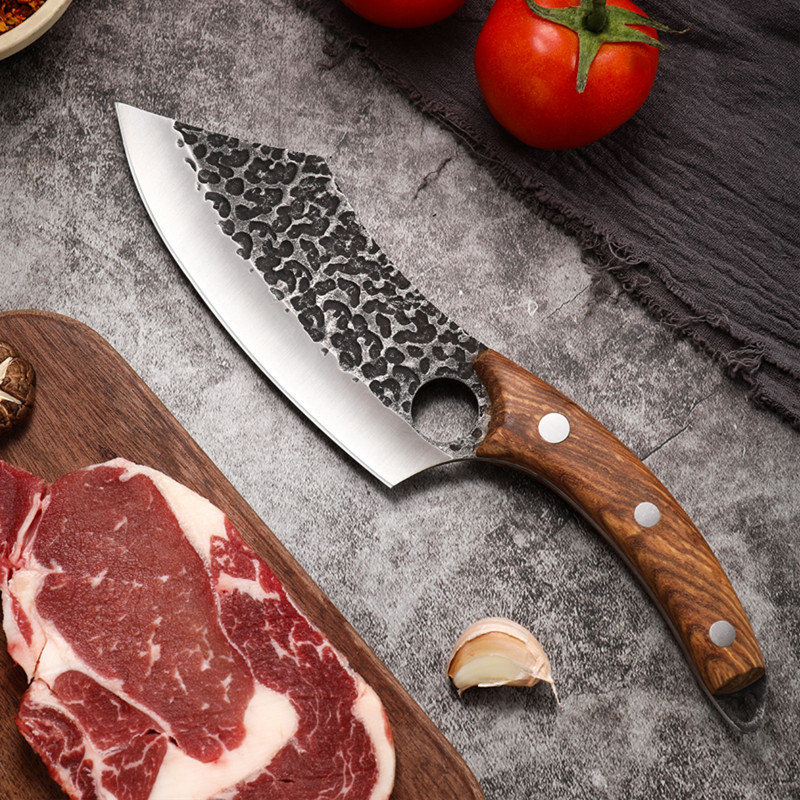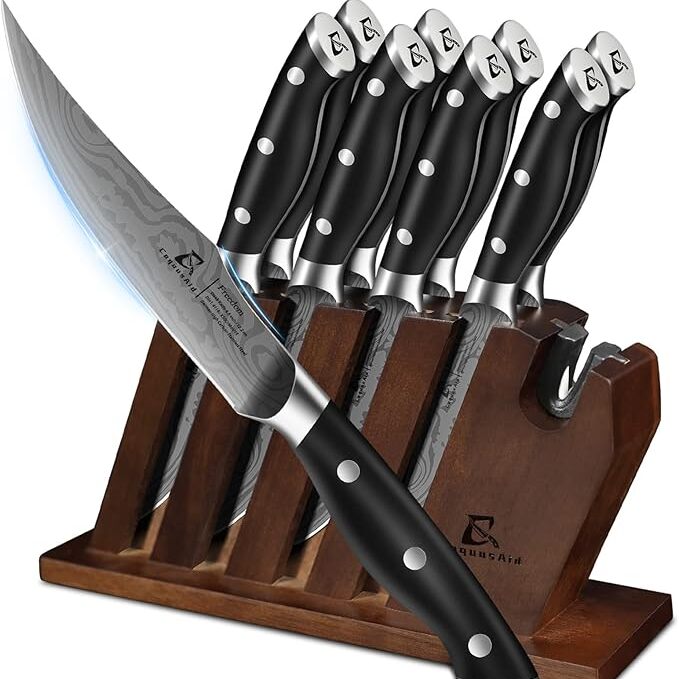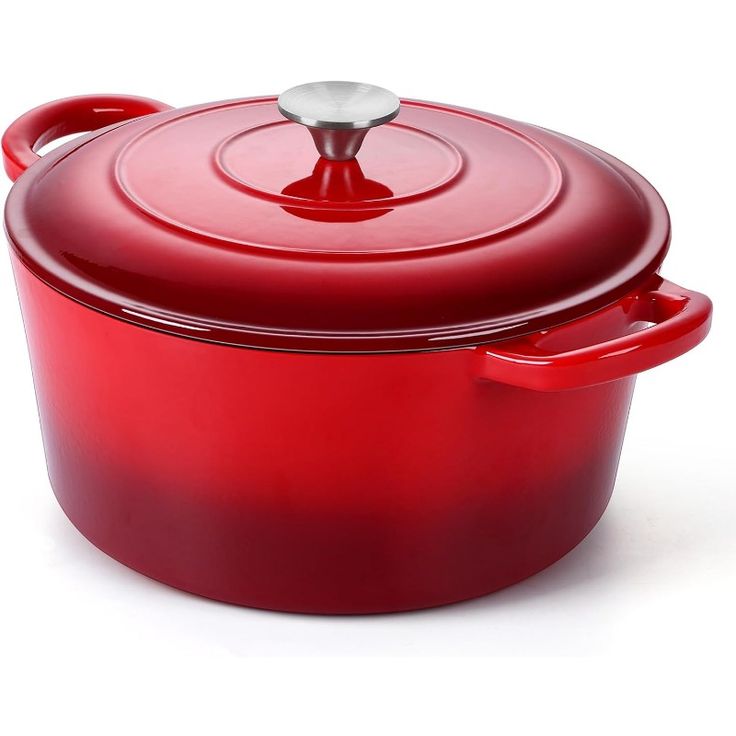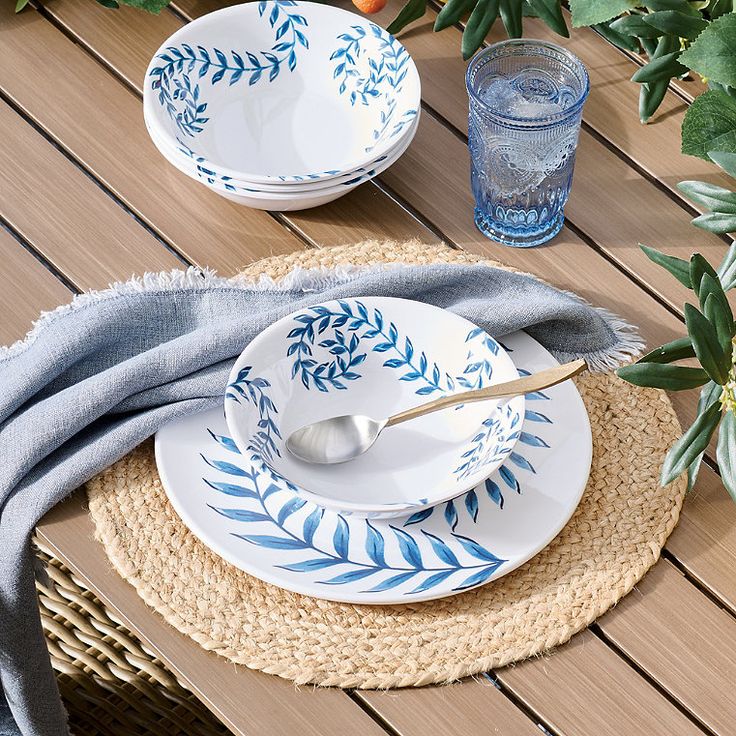History and Heritage of Viking Kitchen Knives
The origins of Viking kitchen knives trace back to Norse traditions. Inspired by Viking warriors, these knives blend strength and durability. Viking heritage infuses every blade, promising long-lasting performance. Expert smiths craft these knives with precision. They fuse historical craftsmanship with modern techniques. Each knife reflects the robust history that Vikings valued in their tools.
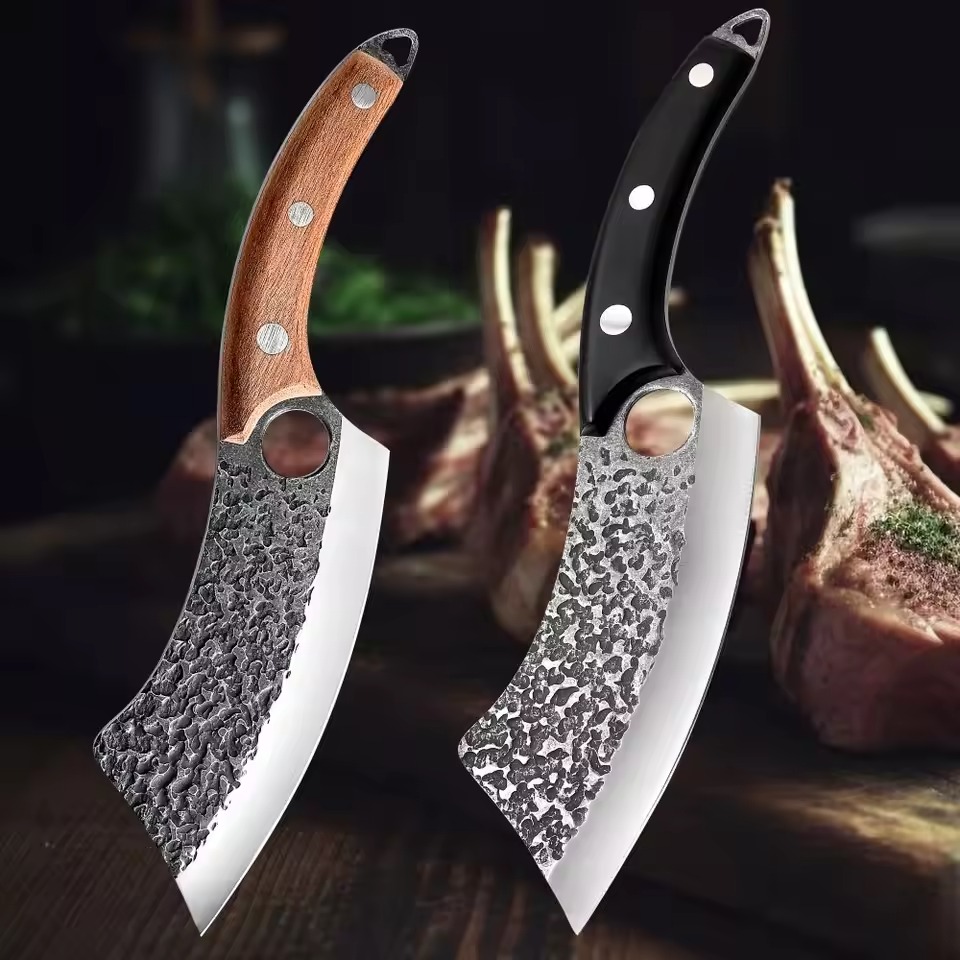
Viking kitchen knives are more than just tools. They are a nod to centuries of exploration and conquest. Vikings were famous for their superior weaponry. That tradition of excellence continues in these knives. The materials and design honor the tough spirit of the Vikings. Users appreciate their knives not only for their utility but also for their historical significance.
Look for their distinctive designs and patterns. Many Viking kitchen knives feature engravings that echo Viking art. These patterns are not just decorative. They also show commitment to cultural legacy. Moreover, the design often enhances grip and balance, crucial for precise cutting.
Today’s Viking kitchen knives stand for resilience and precision. They deliver a cooking experience enriched by history. Each slice and dice with a Viking knife is a tribute to the past. Chefs treasure these knives for their ability to merge ancient art with culinary modernity.
To choose a Viking kitchen knife is to own a piece of history. These knives carry stories of Norsemen and their legendary exploits. As such, each kitchen task becomes an extension of a timeless heritage. Forged to withstand the test of time, Viking kitchen knives are not just kitchenware. They are pieces of an enduring legacy.
Different Types of Viking Kitchen Knives
When exploring Viking kitchen knives, one will find a variety of types tailored for specific tasks. Understanding the differences is key to selecting the right knife for your culinary needs.
- Chef’s Knife: The multi-purpose star of the kitchen. It chops, dices, and slices with ease.
- Utility Knife: Smaller than the chef’s knife, it’s perfect for more delicate tasks.
- Paring Knife: Ideal for peeling and other precision work.
- Bread Knife: Its serrated blade cuts through bread without crushing it.
- Carving Knife: Designed to slice meat cleanly and with control.
- Santoku Knife: A Japanese-style knife that’s great for chopping vegetables.
- Cleaver: A robust knife used for cutting through bones and tough materials.
Each type of Viking knife comes with specific features. This includes special blade designs or handle grips. They reflect the power and precision that one associates with the Viking legacy. Whether you’re a seasoned chef or a home cook, there’s a Viking kitchen knife designed for your task. By choosing the right type, you’re ensuring that your cooking process is efficient, effective, and enjoyable.
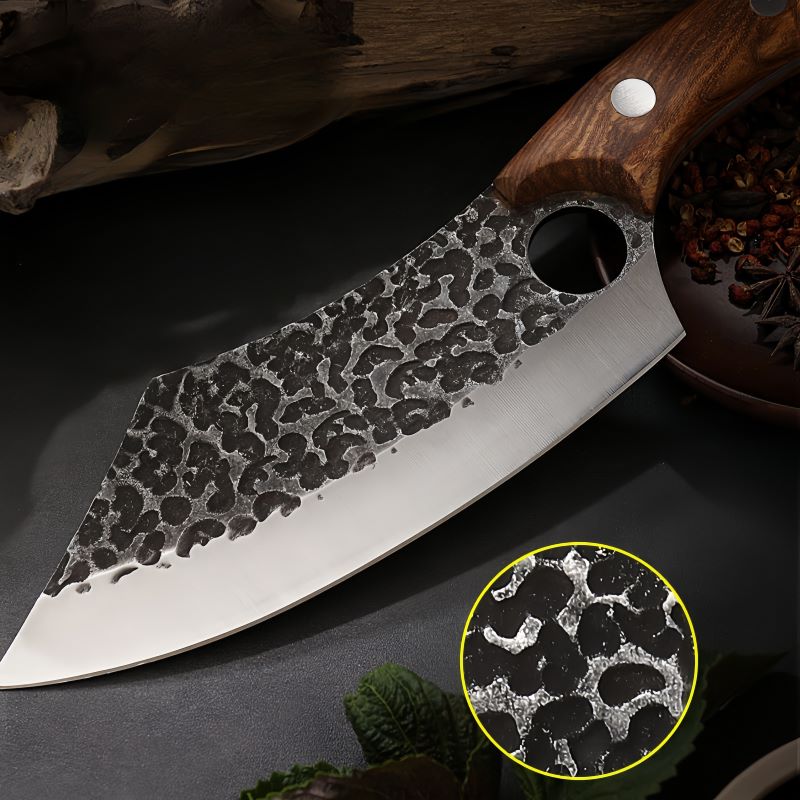
Essential Features to Consider
When shopping for Viking kitchen knives, focus on key features. These ensure top performance and longevity. Here’s what to check:
- Blade Material: High-quality steel is a must. It resists corrosion and keeps the edge sharp.
- Handle Comfort: Look for ergonomic handles. They ease the strain on your hands.
- Balance and Weight: A well-balanced knife feels stable. It makes cutting smooth.
- Knife Construction: Full-tang designs are stronger. The blade runs into the handle.
- Sharpness: Sharp knives need less force. They cut cleanly.
- Versatility: Some knives handle multiple tasks. These can be more cost-effective.
Remember, Viking kitchen knives represent a blend of history and functionality. Thus, their quality and craftsmanship are non-negotiable. Invest in features that honor those standards. You’ll enhance your culinary experience. At the same time, you’ll embrace a piece of Viking resilience and heritage.
Caring for Your Viking Knives
Proper maintenance of Viking kitchen knives is vital for lasting performance. Here’s how to care for these tools:
- Clean After Use: Always wash knives by hand after each use. Avoid dishwashers as they can damage the blades.
- Dry Thoroughly: After cleaning, dry the knives immediately to prevent rust. Use a soft cloth for drying.
- Sharpen Regularly: Keep the blades sharp for best performance. Use a honing rod or stone for sharpening.
- Use Appropriate Cutting Boards: Hard surfaces can dull knife blades. Choose wooden or plastic boards instead.
- Store Safely: Keep knives in a knife block or on a magnetic strip. This protects the blades and prevents accidents.
- Oil the Handle: If your knives have wooden handles, oil them occasionally. This keeps the wood from drying out.
By following these simple steps, you can ensure your Viking kitchen knives remain in top condition. This will provide you with a reliable tool that continues to tell the story of the Viking heritage in every use.
Top Viking Kitchen Knife Sets
When you’re ready to enhance your kitchen with Viking kitchen knives, consider investing in a set. A knife set offers a variety of essential knives at a better value than purchasing individually. Here are some top Viking kitchen knife sets to look out for:
- The Professional Chef Set: This set often includes a chef’s knife, carving knife, and a paring knife. It’s ideal for those who cook frequently and require versatile tools.
- The Home Cook Set: Tailored for everyday use, it typically contains a chef’s knife, utility knife, and a bread knife – perfect for family meal prep.
- The Specialty Set: For those passionate about baking or meat preparation, a set with a bread knife or a cleaver might be more suitable.
- The Comprehensive Set: Some sets offer all the types of Viking knives, designed for the complete culinary experience. However, it’s a larger investment.
Choosing a set should match your kitchen activities. Consider the tasks you perform most and select accordingly. Good sets combine quality materials, comfortable handles, and balanced weights. They maintain sharpness and are easy to care for, ensuring long-lasting use.
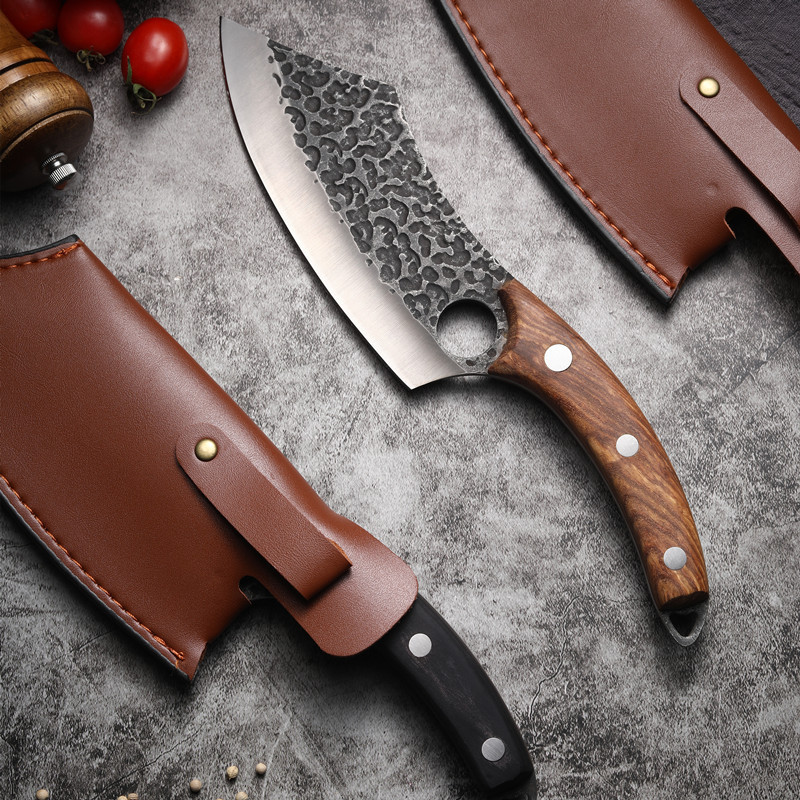
Knife sets also make for impressive gifts. They convey not only utility but also the Viking heritage. With proper care, a Viking kitchen knife set can serve as both a tool and an heirloom, bringing the spirit of ancient Norsemen to your kitchen.
Comparing Viking Knives with Other Brands
Viking kitchen knives stand out for their unique history and design, but it’s useful to compare them with other brands to truly appreciate their value.
When comparing Viking knives to other kitchen knife brands, pay attention to these points:
- Material Quality: Check if other brands use high-quality steel like Viking knives.
- Craftsmanship: Notice the level of detail in construction, from blade to handle.
- Design Elements: See if others offer designs that are both practical and culturally rich.
- Price Point: Viking knives may have a higher cost due to their durability and history.
- Warranty and Customer Service: Good brands stand behind their products with solid warranties and excellent service.
Other brands might offer knives with advanced technology or cheaper options. Yet, they often lack the storied past and robustness that Viking kitchen knives boast of. Chefs and home cooks enjoy Viking knives not just for their utility but for the saga they embody.
Remember, the choice depends on your needs. If heritage and durability are top priorities, Viking knives might suit you best. If cost or technological features are your focus, explore other brands carefully. Weighing these factors will guide you to the right decision for your kitchen.
The Art of Knife Selection: Matching Knives with Tasks
Mastering the art of knife selection demands knowledge of how each Viking kitchen knife best serves its purpose. The Viking kitchen knives’ variety caters to different culinary tasks. To maximize your kitchen’s efficiency, match each knife to its ideal use.
- Chef’s Knife: Think of it as the kitchen workhorse. It handles chopping vegetables, slicing meats, and much more with finesse.
- Utility Knife: Its smaller size is perfect for slicing smaller fruits and trimming meat.
- Paring Knife: Use it for peeling fruits and vegetables. Its precision is unmatched for delicate tasks.
- Bread Knife: The serrated edge cuts through bread like butter. It avoids squishing even the softest loaves.
- Carving Knife: When it’s time to serve roast or turkey, this knife makes clean slices.
- Santoku Knife: It’s your go-to for quick, clean cuts, especially with vegetables.
- Cleaver: Turn to this hefty blade for tough jobs like chopping bones.
Choosing the right knife not only makes the task easier but also safer. A well-matched knife reduces the effort needed, lowering the risk of accidents. It also helps maintain the knife’s sharpness for longer periods.
Remember, Viking kitchen knives are designed for longevity and efficiency. By pairing the right knife with each specific task, you embrace the full potential of these fine tools. Your cooking will not only be smoother but also a true reflection of the Viking spirit of excellence.
Where to Buy Viking Kitchen Knives
When you’re ready to invest in Viking kitchen knives, finding the right place to purchase them is crucial. Here’s a straightforward guide on where to find these exquisite tools:
- Kitchenware Stores: Many specialist stores carry high-quality knife brands, including Viking.
- Online Retailers: Websites offer a vast selection and often provide customer reviews.
- Direct from Manufacturers: Buying directly can ensure authenticity and may include warranty benefits.
- Culinary Boutiques: These shops focus on premium kitchen items and might offer Viking knives.
- Home Goods Stores: Larger chains sometimes stock Viking knives among other kitchenware.
Before making a purchase, compare prices and check for any ongoing sales or discounts. Additionally, consider the retailer’s return policy and customer service reputation. Remember, Viking kitchen knives are an investment in both quality and history, so take care to choose a reputable seller.
Lastly, getting hands-on experience with the knives before buying is always a good idea, if possible. It allows you to feel the balance, grip, and weight, ensuring a good match for your needs. Whether you’re buying in-store or online, make sure you select the appropriate type for your culinary tasks, as discussed in the previous section on matching knives with tasks.
By approaching the purchase of Viking kitchen knives with care, you ensure they will be a valued part of your kitchen for years to come.
